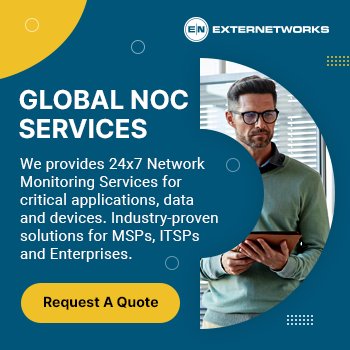Managed Services Delivery Model

What is a Managed Service Delivery Model?
A managed service model is when a company provides IT services to customers through a third-party service provider. The customer pays for the service directly to the provider instead of the vendor. This allows the customer to focus on other business activities while the provider takes care of all the technical details.
What are Managed Services?
A Managed IT service involves outsourcing your IT systems so that an external provider is responsible for your IT process, infrastructure, and network security. A managed IT provider does not fall under the category of outsourcing on demand. Instead, your managed IT provider offers a long-term support service for your IT systems.
In essence, managed services providers (MSP) allows modern businesses to delegate their IT operations to them for handling their IT responsibilities.
These managed service providers also provide round-the-clock monitoring services, reporting issues, and resolution.
Some key services providing managed service providers (MSP) include data center management, networking management, mobile device management, IT infrastructure management, backup and disaster recovery management, communications management, and security management services.
What are the Benefits of Managed IT Services?
The latest technology: With a managed service provider, you’ll ensure that your business consistently uses the latest technology. IT Managed Service Providers or MSPs, continually update your tech services, ensuring that your organization remains future-proof.
Highly secure IT infrastructure: MSPs provide your business with a secure infrastructure, so you can rest assured that your data and applications are safe. With managed services 24/7, businesses gain improved risk management and less downtime.
Expertise: When you use a managed IT provider, you gain expert-level IT staff without having to invest lots of time and money in hiring and training.
Centralization: A managed network means that you can centralize your servers and applications as part of a managed data center. This results in enhanced employee performance, backup infrastructure, and the potential for virtual services.
What is the History of Managed IT Services?
Back in the early ’90s, IT followed a ‘break/fix’ system. When businesses had an IT issue, they called in an IT expert to come in and deal with it. However, this ‘break/fix’ system had many flaws. IT problems are often sporadic, which makes them hard to budget for. As technology became more prevalent, many businesses found that the ‘break/fix service’ wasn’t enough to keep up with technology changes and maintenance. In response to these IT challenges, managed IT services were developed. These services are offered via long-term IT service agreements.
What are the Challenges of Managed Service Providers?
Determining pricing structures can be difficult for MSPs. Managed service providers need to strike the right balance between making a profit and offering affordability to the customer. MSPs should provide flexible pricing and offer transparency. IT MSPs should be open to updating business processes to ensure that customers gain the advantages of consumption-based IT pricing.
Another challenge for MSPs is to provide high-quality service without relying on automation. MSPs must seek to maintain a good working relationship with customers while delivering on budget and on time. As information technology and cloud computing have advanced, consumers expect an end-to-end service. From implementation to migration and ongoing operations, MSPs must rise to the challenge of service offering a complete managed service.
Avail Premium NOC Services with 24/7 Coverage. Request NOC Pricing! ![]()
What is a Service Delivery Model Examples?
The following are some types of delivery models:
Managed Network Infrastructure (MNI) – An MNI consists of hardware, software, and support services provided by one organization. Examples include routers, switches, firewalls, and servers.
Cloud Computing – Cloud computing refers to using Internet-based resources such as storage space, processing power, and networks. It also includes online tools and applications.
Software as a Service (SaaS) – SaaS is a type of cloud computing where users access applications over the internet rather than installing software locally.
Infrastructure as a Service (IaaS) – IaaS is another form of cloud computing where companies rent out their physical assets like computers, servers, and networking equipment.
Platform as a Service (PaaS) – PaaS is a way of providing developers with application development environments and infrastructure.
What is the Managed IT Services Model?
In the past, IT service models looked rather different. IT consultancies offered their services on an ‘as and when’ basis. Today, many IT service providers are adopting a managed services IT delivery model. MSPs take full responsibility for the business’s IT processes from an off-site location, supported by the cloud. From network monitoring to cyber threat monitoring and help desk services, MSPs provide extensive IT packages.
What are the Different Pricing Models For Managed Service Providers?
Managed service providers usually include all the services they provide in one monthly fee. A flat-rate pricing model allows businesses to improve their budgeting and access the specific services they need (without expensive surprises).
Managed IT services are available in several different pricing models, for instance, a ‘per-device pricing model.’ Under this pricing model, companies are charged one flat rate each month for all the devices which are supported by their MSP. Other MSPs offer an a la carte price structure. With this price system, businesses choose the IT support they need and pay a monthly fee for these services only. Some MSP solutions also provide a tiered pricing model. With a tiered system, the more extensive your IT package, the higher the monthly price.
Which Other IT Delivery Service Models are Available?
When businesses need help with their IT, they usually consider one of two IT delivery model. The first is managed services, and the second is staff augmentation.
The staff augmentation model supports businesses by adding on-site IT staff to their teams based on the extra skills they need. A staff augmentation model allows businesses to augment in-house employees with outsourced staff. The cost model is simple; calculating the hours worked and the rate.
As discussed above, a managed services model involves outsourcing the IT management processes and operations. Many businesses prefer this method because the business gets a complete service for the long term. The managed IT services approach has a distinct advantage over staff augmentation. Staff augmentation brings expert skills, while managed IT services offer expert skills and advanced technology infrastructure. Managed IT services can provide businesses with a strategic vision to improve IT infrastructure.
What makes Managed IT Services a Popular Choice?
A managed IT services provider for small business offers a comprehensive range of services at a single fixed price. This means you don’t have to worry about unexpected costs. It also means that there will be no hidden charges. You know exactly what you are paying for.
Another benefit of using a managed IT services provider is that it provides a clear view into how much time and effort goes into managing your IT environment. In addition, managed IT service providers typically use state-of-the-art tools and technologies to monitor and maintain your IT infrastructure.
How to Choose the Right MSP?
Choosing the right managed service provider is not easy. There are many factors to consider when choosing the right managed service provider. Here are some things to look out for when selecting an MSP:
- How do they charge? Flat rate vs. per device.
- What does the contract cover? Does it include maintenance, security updates and upgrades?
- Do they have experience in my industry?
- Are they accredited?
- Is their equipment up to date?
- Do they have the resources I need?
- Can they meet deadlines?
- Do they have a good reputation?
- Are they transparent?
- Do they have a strong customer focus?
- Do they have a 24/7 emergency hotline?
Managed Services at ExterNetworks
If you’re looking to work with an experienced and competent Managed IT Service Provider, then there won’t be a much better group than ExterNetworks. Operating since 2001, there won’t be many more companies out there with the caliber they have. They’ll provide end-to-end care, the latest technology, and the drive to work with you as you look to climb the ladder to success.
While running your business with all of the IT services that you rely on, you need a team of professionals to give you expert support. With ExterNetworks, this is precisely what you get. Your business will enjoy the deployment of new services and the latest technologies to meet your business demands. With ExterNetworks, you’ll also get a handle on controlling your IT costs. Rest easy knowing that a service level agreement will define your partnership with us so you’ll know exactly what to expect.
our team will form a unique relationship with you to help you better manage your business.
Want to explore how we can form a unique relationship? We’ll help you better manage your business. Let’s schedule a 15-minute call to see how we can help your business.
Let’s chat: Schedule Your 15-minute call






